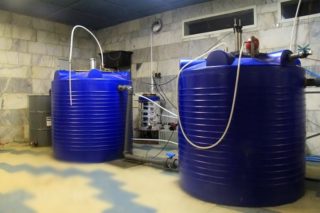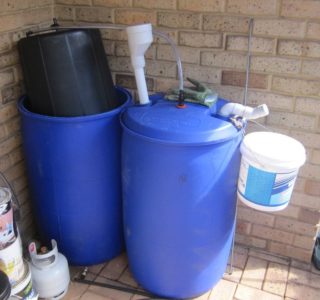The extraction of natural gas has made it possible for people living in apartments to get comfortable living conditions. Only thanks to the gas pipeline, cooking time is halved, and in winter it is always warm in the apartment. Unfortunately, for residents of the private sector, such a pleasure is expensive. However, there is a way out. It's good when a biogas plant is built in your own house, it's not difficult to do this with your own hands. This will require understanding how chemical reactions take place and putting in a little effort.
What gas can be extracted from
- plant waste;
- wastewater;
- bird or animal manure.
In the case of choosing any raw material, the coefficient and rate of gas production will differ. Shredded vegetation decays for a long time and gives a small amount of biogas, wastewater is more suitable for diluting the bulk, but excrement is capable of giving flammable gas already on the second day after the start of use.
How it works
- loading the reactor;
- waiting for synthesis;
- collection and storage of gas.
During loading, the biomass should be thoroughly mixed, and the fermentation tank should be airtight. The time for obtaining blue fuel can be shortened if the reactor is insulated, or better, if it is heated. For collection and storage, you will need high-quality cylinders and hoses, because you cannot neglect safety in gas production.
The necessary conditions
The owners of the biogas-producing system note the high efficiency of its work. However, there are 3 conditions that must be met for the installation to be useful.
- Despite the size of the proposed biogas plant, it will require a dedicated space. For a small gas production system, a garage or shed may well be suitable, but installations capable of fully heating a home will require a lot of space. Often, to save usable space in private territory, tanks are dug in in an open space.
- Before constructing a biogas plant, it should be understood that it needs constant monitoring. This is not to say that it will be necessary to be tirelessly near the system, but to avoid the dangers of accidental gas release, the installation must be monitored from time to time. During long trips, it must be cleaned, and the tanks must be opened.
- To start building a biogas plant for home heating or cooking, the amount of raw materials available must be calculated. If biomass is to be purchased, then you need to make sure that raw materials are always available, since insufficient volume of mass significantly reduces production.
What is required for a biogas plant
- fermentation tank;
- reliable hoses or tubes;
- sealed fuel storage tank;
- valves;
- filter (required).
When a biogas plant is being built for heating a house, a more complex production system is required, with the presence of reducers, an engine for pumping gas, an agitator, biomass heating and tank insulation.
Simplest installation principle
The barrel must be hermetically sealed, but it requires openings for loading biomass, pumping gas and removing waste material. To simplify the task, you can draw a universal conclusion that will allow you to carry out all the manipulations. First, through this hole, the biomass diluted to kefir density is poured. Later, it can be screwed on with a plug with a tube leading out for gas.
The gas outlet from the barrel must pass through a filter, because the biological mass releases up to 10% hydrogen sulfide, which is harmful, and 35% carbon, which impairs the combustible properties of methane. A flask with metal shavings can be used for a hydrogen sulfide filter, and a slaked lime slurry solution can be used to remove carbon.
After passing through the filters, the gas must enter the storage tank. For this purpose, a container of large volumes is suitable, in which you need to place a collector, it is also a container for saving blue fuel. A dense sealed polyethylene or an old car camera is suitable as a collector.
System for multifunctional use
Making a multifunctional biogas plant for a private house with your own hands will not be much more difficult than a simple device, but such a voluminous system will take up more space.
Reactor
In order for biogas to be sufficient for heating and maintenance, a reactor will be required, the capacity of which is capable of holding at least 300 kg of raw materials. It should be borne in mind that biomass is loaded only for 2/3 of the tank volume. The free space of the reactor is necessary for the normal course of fermentation processes. In addition, it is advisable to equip a large reactor with heating.
Heating
For heating, the reactor is placed in a container with water, where electric heating elements are located.
Compressor
When using a large biogas plant, it is better to collect the gas in cylinders. For this, it is convenient to use a compressor that is connected to the outlet of the gas passed through the filter.











